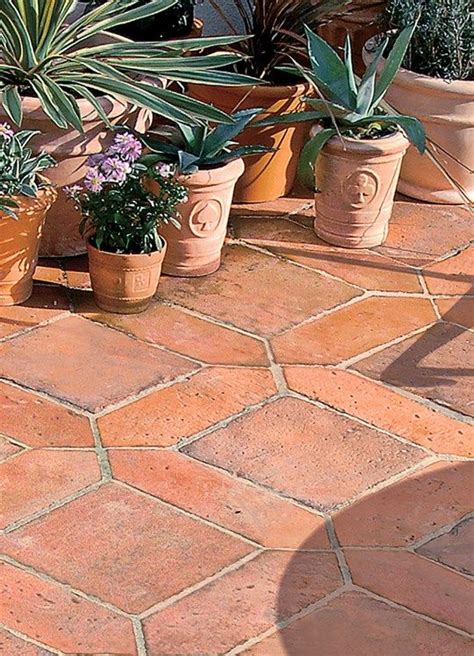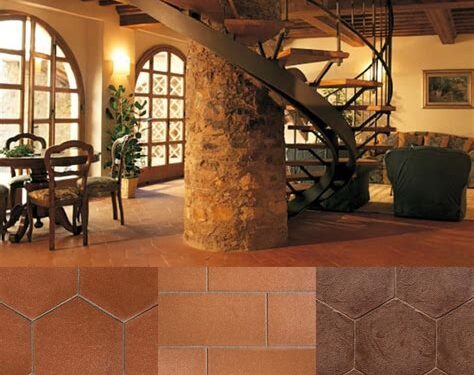Terracotta tiles, once viewed as a rustic relic, are now reclaiming their place as a staple of sophisticated interior and exterior design. This timeless material, with its earthy hues and natural charm, has made a powerful resurgence in the world of home decor. From luxury villas to minimalist apartments, terracotta tiles are being embraced for their durability, sustainability, and undeniable aesthetic appeal.
The Timeless Appeal of Terracotta
Terracotta, derived from the Italian words “baked earth,” has a history dating back thousands of years. Ancient civilizations like the Romans and Greeks used terracotta for roofing, flooring, and decorative sculptures. Its enduring appeal lies in its warm, earthy tones and tactile texture, which add a sense of authenticity and organic beauty to any space.
Today, terracotta is no longer confined to traditional or rustic settings. Designers and homeowners are incorporating it into modern, eclectic, and even industrial interiors, blending old-world charm with contemporary flair.
Why Terracotta Tiles Are Trending Again
The comeback of terracotta tiles is driven by several key factors:
A. Sustainability
Terracotta is an environmentally friendly material made from natural clay. Its production involves minimal processing and energy consumption compared to synthetic tiles, making it a sustainable choice for eco-conscious homeowners.
B. Versatility
Terracotta tiles are incredibly versatile. They can be used for flooring, walls, countertops, backsplashes, outdoor patios, and even as decorative accents. Their adaptability to various styles—whether Mediterranean, bohemian, or minimalist—makes them a favorite among designers.
C. Warm Aesthetic
With their rich, reddish-brown hues and natural variations, terracotta tiles create a warm and inviting atmosphere. They pair beautifully with neutral palettes, wooden furnishings, and metallic accents, offering a cozy yet elegant vibe.
D. Durability
When properly sealed and maintained, terracotta tiles are remarkably durable and can last for decades. Their hard surface resists wear and tear, making them suitable for high-traffic areas.
E. Unique Character
Each terracotta tile is slightly different in shade and texture, providing a unique, handcrafted look that mass-produced tiles simply cannot replicate.
Popular Uses of Terracotta Tiles
In today’s design landscape, terracotta tiles are being used in innovative ways across different parts of the home:
A. Flooring
Terracotta tiles are ideal for flooring in kitchens, living rooms, entryways, and outdoor patios. Their earthy tones create a grounded, natural feel underfoot.
B. Wall Cladding
Using terracotta tiles as wall cladding adds depth and texture to spaces like bathrooms, accent walls, and fireplaces.
C. Kitchen Backsplashes
A terracotta backsplash brings warmth and artisanal charm to modern kitchens, especially when paired with natural wood and stone countertops.
D. Outdoor Spaces
Terracotta’s durability makes it perfect for outdoor applications such as garden paths, pool decks, and veranda floors, where it harmonizes beautifully with greenery.
E. Decorative Elements
Terracotta tiles can be used as decorative inlays, mosaics, or patterned borders to add artistic flair to floors and walls.
Modern Interpretations of Terracotta
While traditional terracotta tiles are typically unglazed and matte, modern manufacturing has introduced new finishes and styles that expand their design possibilities:
A. Glazed Terracotta
Glazed terracotta tiles offer a subtle sheen and greater stain resistance, making them suitable for kitchens and bathrooms.
B. Geometric Shapes
Contemporary terracotta tiles come in a variety of shapes beyond the classic square or rectangle, such as hexagons, fish scales, and chevrons, adding geometric interest to interiors.
C. Patterned Terracotta
Some terracotta tiles are stamped or painted with intricate patterns, blending the warmth of clay with artistic motifs for a bold statement.
D. Large Format Tiles
Large terracotta tiles create a seamless, expansive look, reducing grout lines and emphasizing the natural texture of the material.
How to Care for Terracotta Tiles

To maintain the beauty and longevity of terracotta tiles, proper care is essential. Here are some key maintenance tips:
A. Sealing
Since terracotta is porous, it should be sealed with a penetrating sealer to prevent staining and water absorption.
B. Regular Cleaning
Clean terracotta tiles with a pH-neutral cleaner and a soft mop. Avoid harsh chemicals that can damage the sealant.
C. Re-Sealing
Reapply sealer every few years, depending on the level of wear and exposure, to keep tiles protected.
D. Addressing Stains Promptly
Wipe up spills immediately to prevent stains from setting into the porous surface.
E. Avoid Abrasive Tools
Use soft cloths or mops instead of abrasive pads that could scratch the tiles.
Styling Tips for Terracotta Interiors
Integrating terracotta tiles into your home decor can elevate your space with warmth and sophistication. Consider these styling ideas:
A. Pair with Natural Materials
Terracotta complements materials like wood, stone, and linen, enhancing an organic, earthy aesthetic.
B. Balance with Neutrals
Use neutral colors such as white, beige, and gray alongside terracotta to create a balanced, timeless palette.
C. Incorporate Greenery
Plants and terracotta are a perfect match; greenery highlights the rich, warm tones of the tiles.
D. Layer Textures
Mix terracotta with other textured surfaces like jute rugs, woven baskets, and raw timber for added depth.
E. Use as an Accent
If covering a large area feels overwhelming, use terracotta tiles as an accent—for example, a backsplash, a fireplace surround, or a niche wall.
Challenges and Considerations
While terracotta tiles have many advantages, it’s important to consider their challenges:
A. Porosity
Unsealed terracotta absorbs water and stains easily, requiring diligent sealing and maintenance.
B. Softness
Terracotta is softer than porcelain or ceramic, making it more prone to chipping if not handled carefully.
C. Color Variation
Natural color variations are part of terracotta’s charm, but may not appeal to those seeking a uniform look.
D. Not Ideal for Wet Areas
In very wet or humid areas, terracotta may not be the best choice unless properly sealed and maintained.
The Future of Terracotta in Design

Designers predict that the popularity of terracotta tiles will continue to grow as sustainability and biophilic design trends gain momentum. Homeowners are increasingly drawn to materials that evoke nature, authenticity, and timelessness—qualities that terracotta embodies effortlessly.
From small-scale applications like decorative tiles to large-format flooring, terracotta offers limitless possibilities for creative expression while honoring tradition. Its rich history combined with modern reinterpretations ensures that terracotta remains a beloved material for generations to come.
Whether you’re renovating a cozy kitchen, designing an outdoor oasis, or creating a statement wall, terracotta tiles provide a versatile, elegant solution that stands the test of time.














